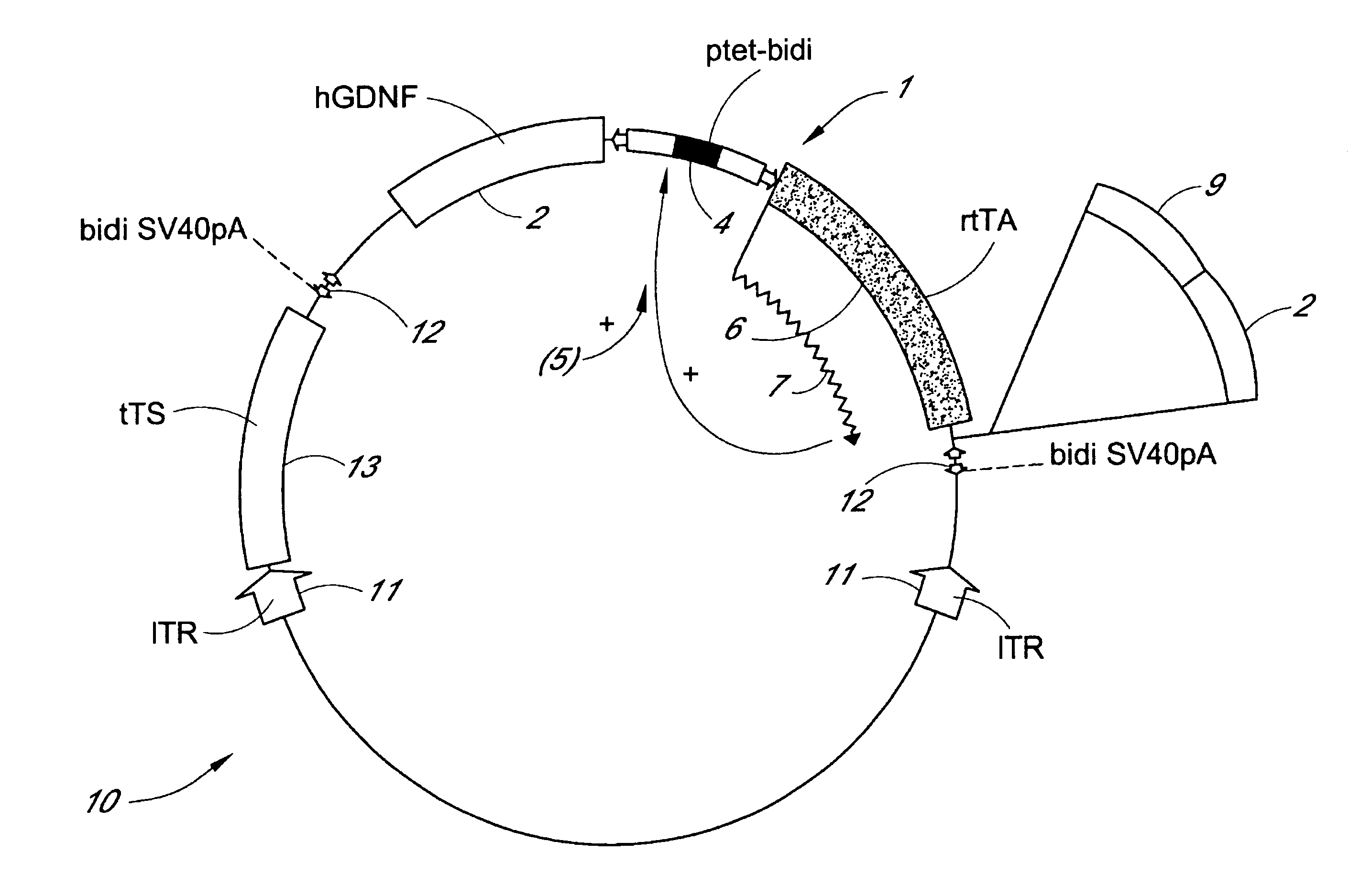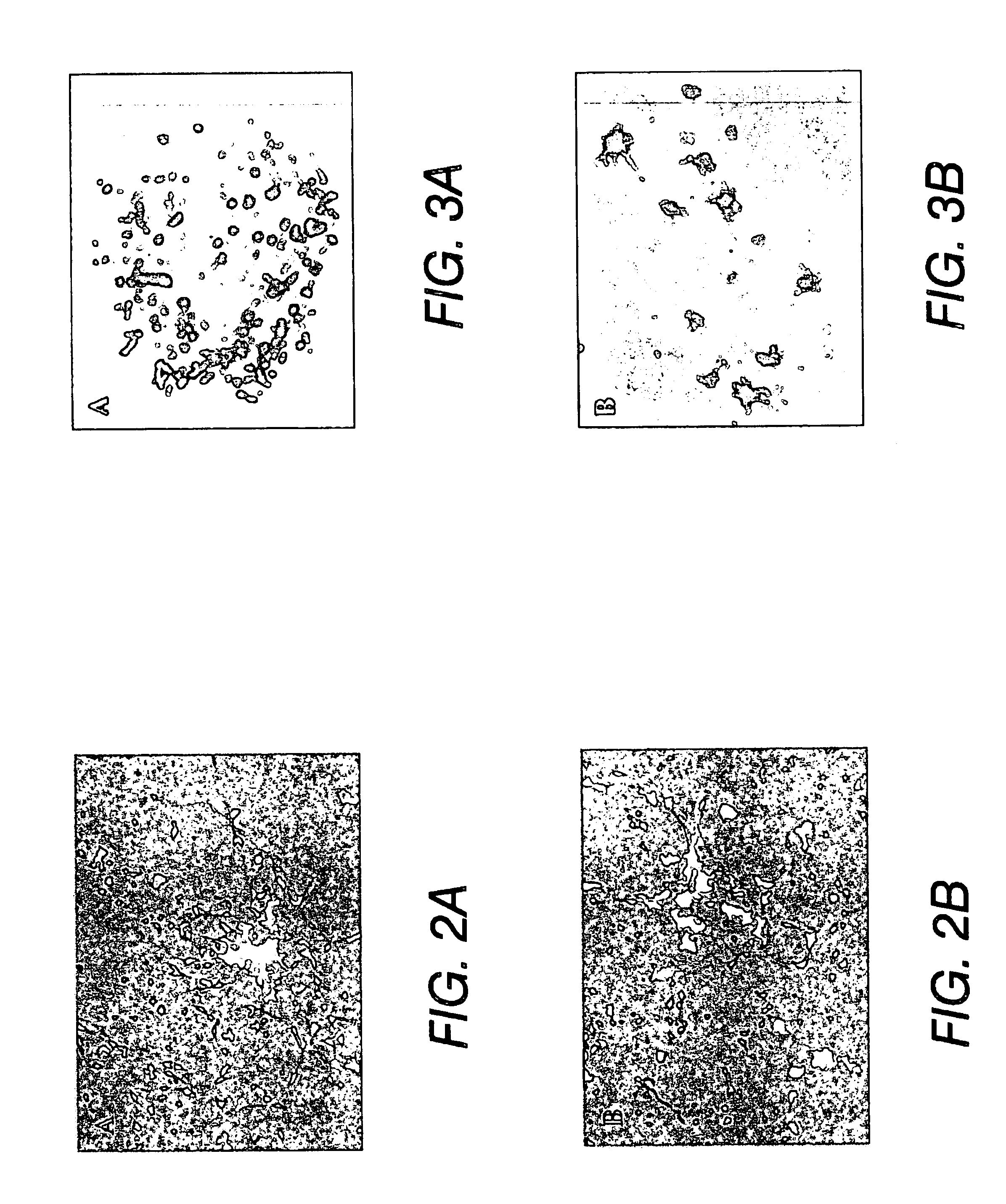Antibiotic inducible/repressible genetic construct for gene therapy or gene immunization
a technology of inducible/repressible genetic constructs and gene therapy, which is applied in the direction of animal repellents, biocide, peptide/protein ingredients, etc., can solve the problems of limited foetal tissue available for transplantation, limited success rate of foetal brain tissue transplantation into impaired brain area of parkinson's and huntington's patients, and limited coordination between foetal tissue harvesting and transplantation procedure, etc., to achieve the effect of improving the control gene gen
- Summary
- Abstract
- Description
- Claims
- Application Information
AI Technical Summary
Benefits of technology
Problems solved by technology
Method used
Image
Examples
example 2
Infection of Rat Foetal Mesencephalon with AAV-CKV-EGFP
We found that an AAV vector expressing the EGFP gene under the control of the CMV promoter can transfer and express the transgene as early as 4 days and at least until 3 weeks after infection of rat foetal mesencephalon.
A total of approx. 100 rat embryos were used either non-infected, infected with AAV-CMV- Egfp or with AAV-CMV-rGDNF.
The transduced cells were detected i) by native fluorescence ii) by FACS analysis of dissociated cells iii) by immunocytochemistry.
In a specific embodiment of the invention, small fragments (12 per mesencephalon) are incubated in a viral suspension as described in example 1.
The AAV vector plasmid expresses the rat GDNF cDNA and expresses the rat GDNF under the control of the CMV promoter. The cDNA coding for rat GDNF was obtained by RT-PCR using mRNA from lesioned sciatic nerve and the following primers: 5'ATGAAGCTTGGTCTACGGAGACCGGATCCGAGGTGC.sub.-- 3'(SEQ ID NO: 1) and 5'GGTCTAGATCTCTGGAGCCAGGGTCAG...
experiment 1
weeks poet-injection the samples were fixed and examined under fluorescence microscopy. This shows that cells with a neuron morphology appeared at 4 days from infection. The transduction efficiency was significantly lower than when using human tissue.
experiment 2
o lmonth post-infection, the samples were dissociated by trypsin and analyzed by FACS The percentage of gfp-positive cells was low (0.1-0.5%) but stable from 4 days to 1 month post-infection (FIG. 3).
PUM
| Property | Measurement | Unit |
|---|---|---|
| time | aaaaa | aaaaa |
| thickness | aaaaa | aaaaa |
| fluorescent | aaaaa | aaaaa |
Abstract
Description
Claims
Application Information
 Login to View More
Login to View More - Generate Ideas
- Intellectual Property
- Life Sciences
- Materials
- Tech Scout
- Unparalleled Data Quality
- Higher Quality Content
- 60% Fewer Hallucinations
Browse by: Latest US Patents, China's latest patents, Technical Efficacy Thesaurus, Application Domain, Technology Topic, Popular Technical Reports.
© 2025 PatSnap. All rights reserved.Legal|Privacy policy|Modern Slavery Act Transparency Statement|Sitemap|About US| Contact US: help@patsnap.com



